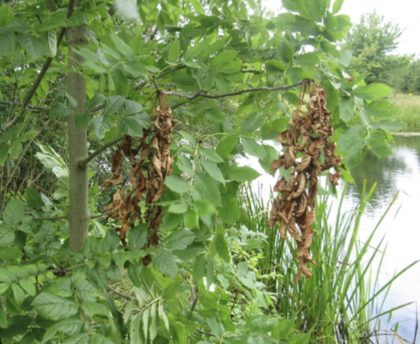Ash dieback (Hymenoscyphus fraxineus) is a fungus which originated in Asia. It doesn’t cause much damage to its native trees. However, its introduction to Europe about 30 years ago has devastated the European ash because our native ash species did not evolve with the fungus and this means it has no natural defence against it.
The disease affects ash trees by blocking the water transport systems. This leads to the dieback of the crown of the tree.
The disease is highly contagious and can spread quickly from tree to tree, causing widespread damage to ash populations. It is estimated that up to 95% of ash trees in the UK could be affected by the disease, which could have a significant impact on the country's ecology and biodiversity.



